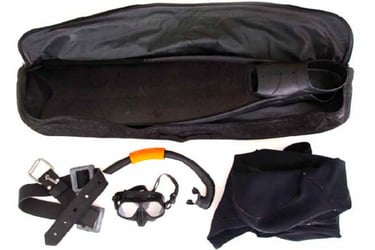About AIDA
The AIDA (International Association for the Development of Apnea) system is the world’s leading standard for freediving education, safety, and certification.
AIDA courses guide you step by step — from breathing techniques and relaxation, to safety procedures and depth training — helping divers build confidence and skills at their own pace.
Recognized in over 100 countries, the AIDA system ensures you learn to explore the underwater world safely, efficiently, and with global certification.

AIDA Free Diving Course
International Association for the Development of Apnea
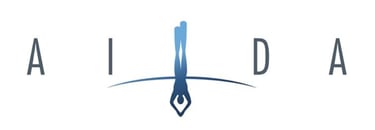
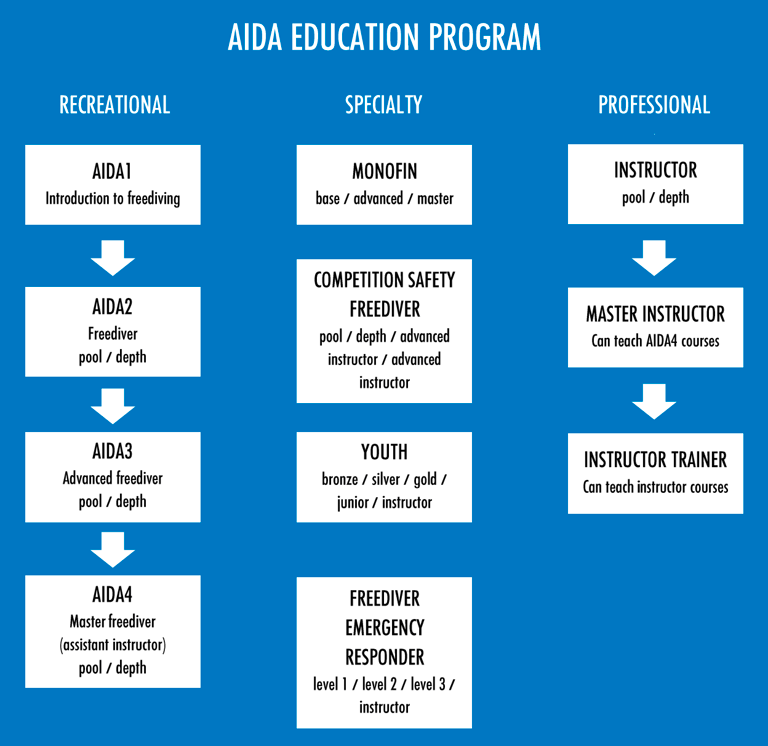

AIDA International Certification: Your Structured Path to Mastery
AIDA 1 (Introduction): Begin your underwater experience. Learn basic breath-hold and techniques in confined water, building a solid foundation in safety.
AIDA 2 (Beginner): Master the Frenzel equalization technique and rescue procedures. Aim to dive independently to depths of 12-20 meters.
AIDA 3 (Intermediate): Refine your skills and deepen your understanding of freediving physiology. Progress to depths of 24-30 meters.
AIDA 4 (Advanced): Learn deep-water rescue and dive planning. Develop the competence to handle complex situations, targeting depths of 32-40 meters.
Mastering freediving opens a gateway to a world of new possibilities:
Become a Certified Instructor: Transform your passion into a career. Guide others on their journey of discovery and experience the joy of teaching.
Underwater Spearfishing: Apply your skills in the ancient art of spearfishing. Interact with the ocean sustainably and experience the unique reward of the hunt.
Competitive Freediving: Test your limits on the competitive stage, either in the pool or open water. Chase national and world records, pushing the boundaries of your mind and body.
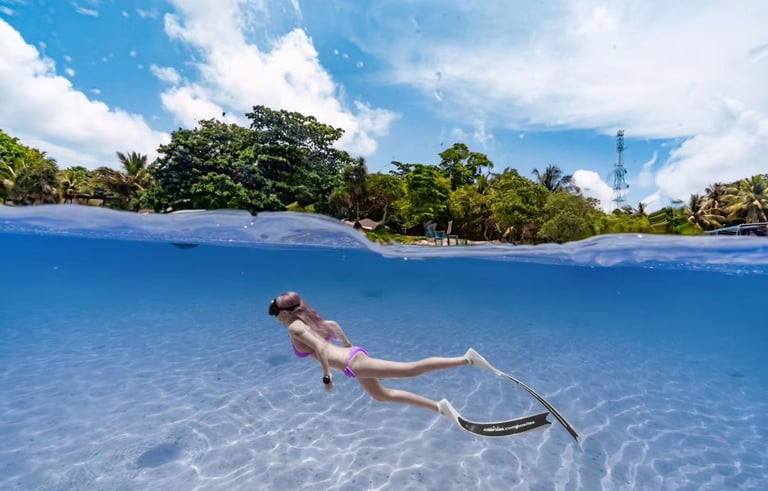

What will you learn?
Suitable for people who don't know how to swim and don't have confidence in the water.
AIDA 1 Course is a beginner's course to learn the basics of freediving, and to acquire basic knowledge and introductory skills to use in freediving.
Completion of theory course:
Breathing Cycle, Pressure Balance, Free Diving Safety Mechanism, Free Diving Programs
1 calm water session:
Use of equipment, breathing procedures, dive buddy mechanism, rescue techniques, turnaround and entry/exit procedures.
AIDA 1
★
Who is this course for?
500QAR
Course Schedule
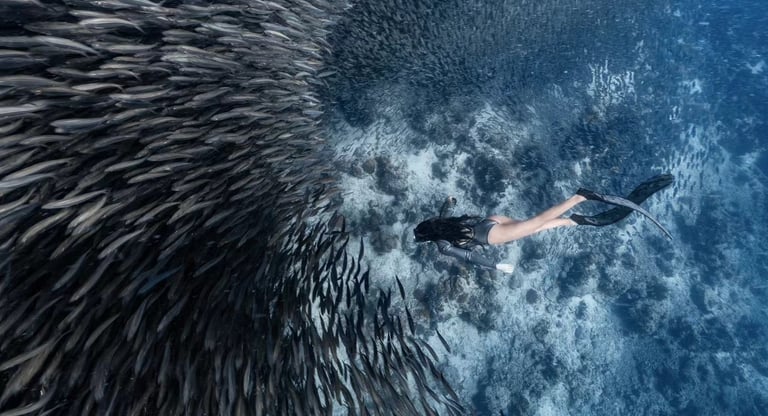

Day 1
• Theory Session
• Confined Water / Pool Session
• Freediving basics and introductory skills such as physical and mental relaxation, fin threading techniques, duck dives and balance.
Non-assessment items
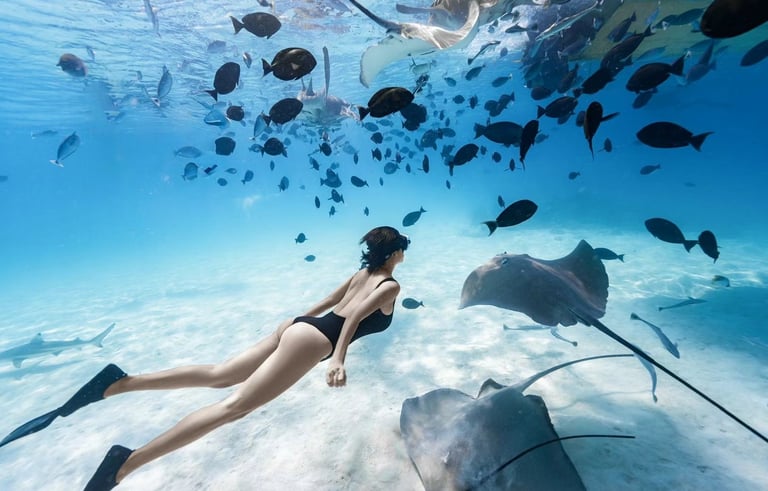

★★
Who is this course for?
What will you learn?
Breathing cycle, pressure balance, free dive safety mechanism, free dive program.
Use of equipment, breathing processes, dive buddy mechanisms, rescue techniques, turnaround and entry/exit processes.
Rope Pulling, Duck Entry, Depth Rescue, Ear Pressure Equalization, Constant Weight Diving, Improving the use of Flippers, and Open Water Entry and Exit Procedures.
AIDA 2
Suitable for people who can swim or are not afraid of water.
level 2 is an basic course to learn freediving, a more comprehensive understanding of freediving, including an in depth skills assessment to improve diving skills.
1600QAR
Course Schedule
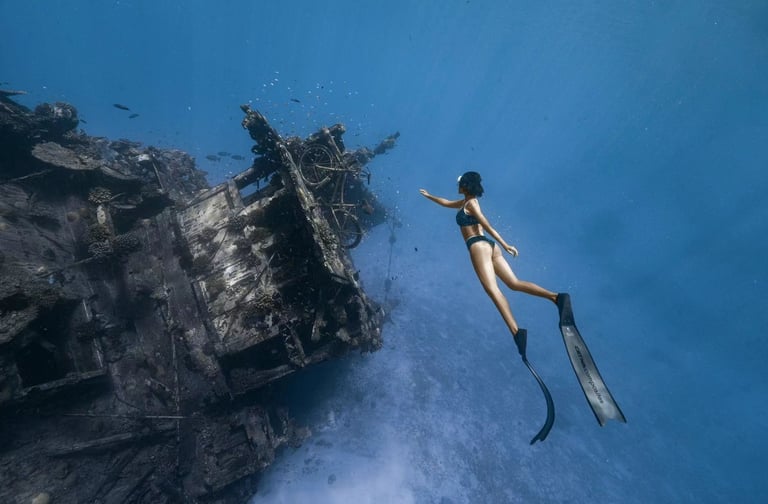

•Theory Session
•Confined Water / Pool Session
Day 1
Day 2
Open Water Session 1
• Mastering the quick release of the safety lanyard
• Proper Weighting
• Breathing Preparation
• Free Immersion (FIM) Descent
• Duck Dive Entry
• Recovery Breathing Process
Open Water Session 2
• Buddy Safety Skills
• Surface supervision while buddy descends
• Rescue practice when freediver surfaces
• Rescue towing for 5–10 meters at the surface
Day 3
Open Water Session 3
• Constant Weight (CWT) Dive
• During descent, act as a buddy and provide safety.
Examination
Theory exam: 75 points
Dynamic 40 meters
Depth dive: 12 meters
Apnea: 2 minutes
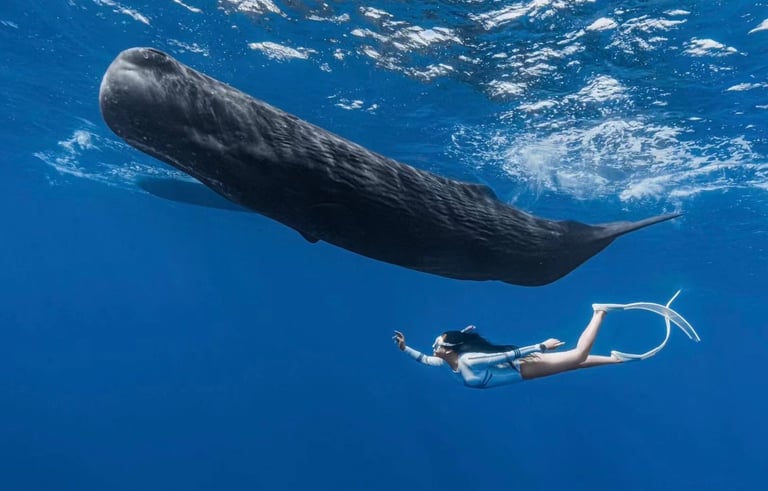

AIDA 3
★★★
Who is this course for?
Suitable for people who have passed the AIDA 2 program and want to continue to break through.
AIDA 3 Course Learn the advanced course of freediving, further deepen and improve the diving skills, and experience the higher realm of freediving.
What will you learn?
Fundamentals of Physiology, Pressure Equilibrium, Possible Air Pressure Injuries, Lung Volume at Depth, Buoyancy and Free Fall Hypoxia and Coma, Mammalian Diving Reflexes.
Training Program, Body Posture Adjustment, Pool Neutral Buoyancy, Rescue Techniques, Carbon dioxide tolerance.
How to test for neutral buoyancy, acting as a safety officer, using safety ropes, free-fall exercises, more finning techniques and body posture exercises.
1800QAR
Course Schedule
Theory Session
•Physiology
• Equalization
• Barotrauma
• Lung Volume at Depth
Day 1
Confined Water / Pool Session
• complete 2:45 of static apnea
• complete 55 m of dynamic apnea
• Review rescue procedures for an LMC incident during static training
• Correctly demonstrate how to choose and test proper weighting to achieve neutral buoyancy during Dynamic Apnea (DYN)
Day 2-4
Open Water Session 1 & 2
• Correctly all quick release methods of the safety lanyard
• Correctly proper weighting for deep dives, determining neutral buoyancy point
Open Water Session 3 & 4
• As a buddy, meet the diver at a minimum of 6 m depth and again at least 15 m depth during ascent
• Simulate leg cramp scenario at 15 m depth and practice arm-only swimming for self-rescue
• Perform towing rescue of a diver for at least 50 m to shore or boat
Examination
Theory exam: 75 points
Dynamic 55meters
Depth dive: 24 meters
Apnea: 2:45 minutes
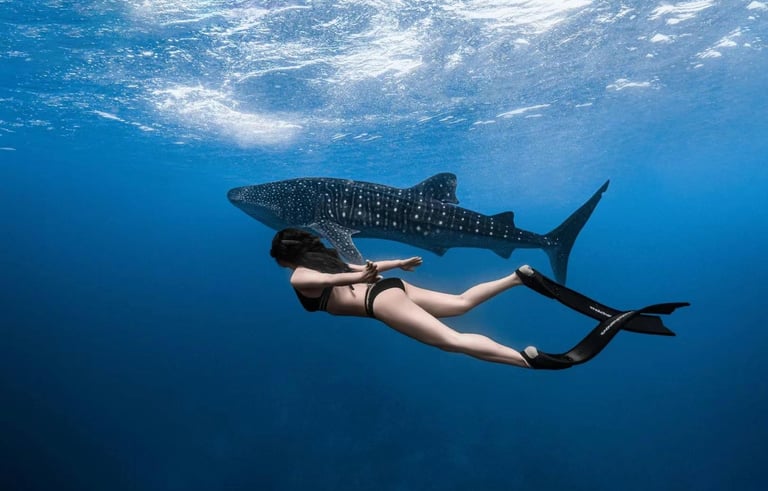

AIDA 4
★★★★
Who is this course for?
Suitable for people who have passed the AIDA 3 program and want to continue to break through.
AIDA 3 Course Learn the advanced course of freediving, further deepen and improve the diving skills, and experience the higher realm of freediving.
What will you learn?
Fundamentals of Physiology, Pressure Equilibrium, Air Pressure Injury, Lung Volume at Depth, Buoyancy and Free Fall Hypoxia and Coma, Mammalian Diving Reflexes
Training Program, Body Posture Adjustment, Pool Neutral Buoyancy, Rescue Techniques, Carbon dioxide tolerance
How to test for neutral buoyancy, acting as a safety officer, using safety ropes, free-fall exercises, flipper kicking techniques and body posture exercises.
Day 5-7
2200QAR
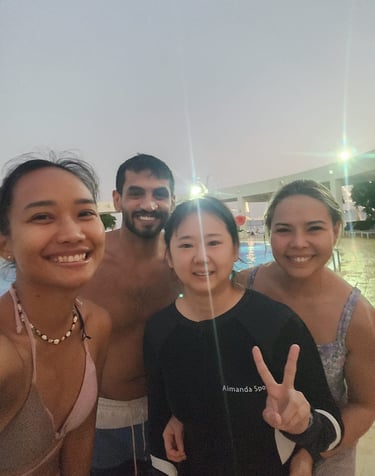

“I never imagined I could dive so deep on a single breath! The instructor was patient and encouraging, making every session fun and safe."
- Ali & Mona & Claudine AIDA 2 Student

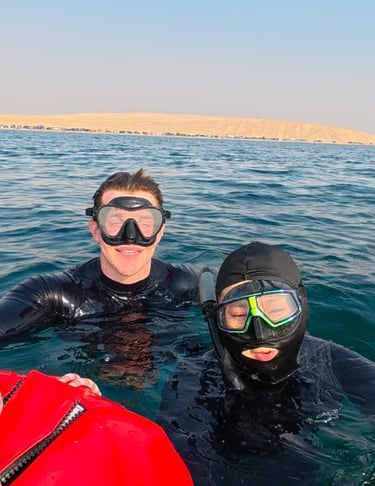
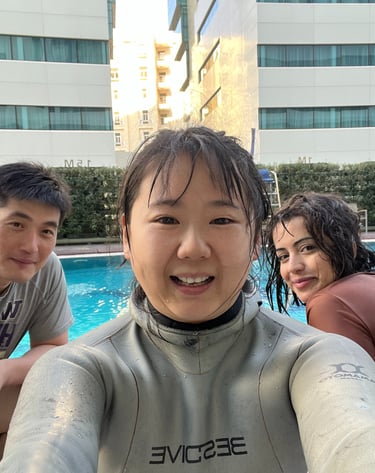

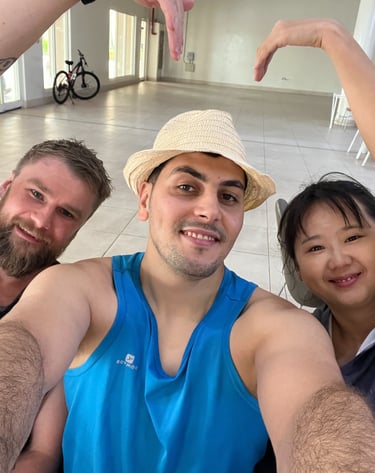

”Taking the AIDA 4 course completely changed my perspective of the underwater world. The coaching was professional and motivating.”
- Walter, AIDA 4 Student
”This was an unforgettable experience! The team made me feel comfortable from the very first pool session to the open water dive.”
-Leyla & Andrew AIDA 2 Student
”AIDA 3 was a game-changer for me. I learned advanced equalization, deep diving techniques, and how to stay calm at greater depths. ”
- Sam AIDA 3 Student
divingqatar@outlook.com
+974-3082-3899
Copyright © 2025 Divingqatar. All rights reserved
Divingqatar is a community of freedivers who have a passion for exploring and enjoying the underwater world. We run depth trips every weekend, pool training during the weekdays and introductory to advanced freediving courses every week.



